Two days ago I went to see a new exhibition. It was in the morning, shortly after opening hours, as I usually do as avoiding crowds is crucial for me. In the past I had my fair share of dealing with the crowds in the most famous museums and it's not fun at all. However, those museums not allow taking photos at all, you can get into serious trouble if you ignore the warnings. Here on the other hand you're welcome to take as many photos as you like, so visiting at early hours is the best, if you want to avoid photographing visitors.
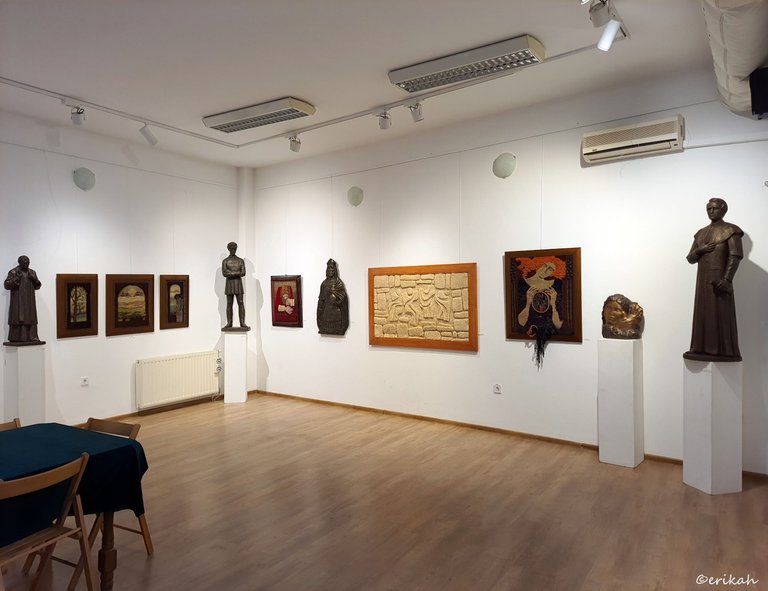
When I had a look inside the exhibition room, I think it's safe to say, my jaw dropped. There's always the element of surprise and most of the time I have no idea what I'm about to see, but what I got here, was absolutely mind blowing.

At the beginning I was alone, but shortly after, an elderly couple came in and even though they were speaking quietly, I could hear the woman saying "extraordinary" like 50 times and I'm not exaggerating. She said "extraordinary" at each and every artwork, several times and you'll see why. I fully agree with her by the way.
There were two artists exhibiting, Mária Hunyadi and László Hunyadi by the way, both masters of art in my eyes.
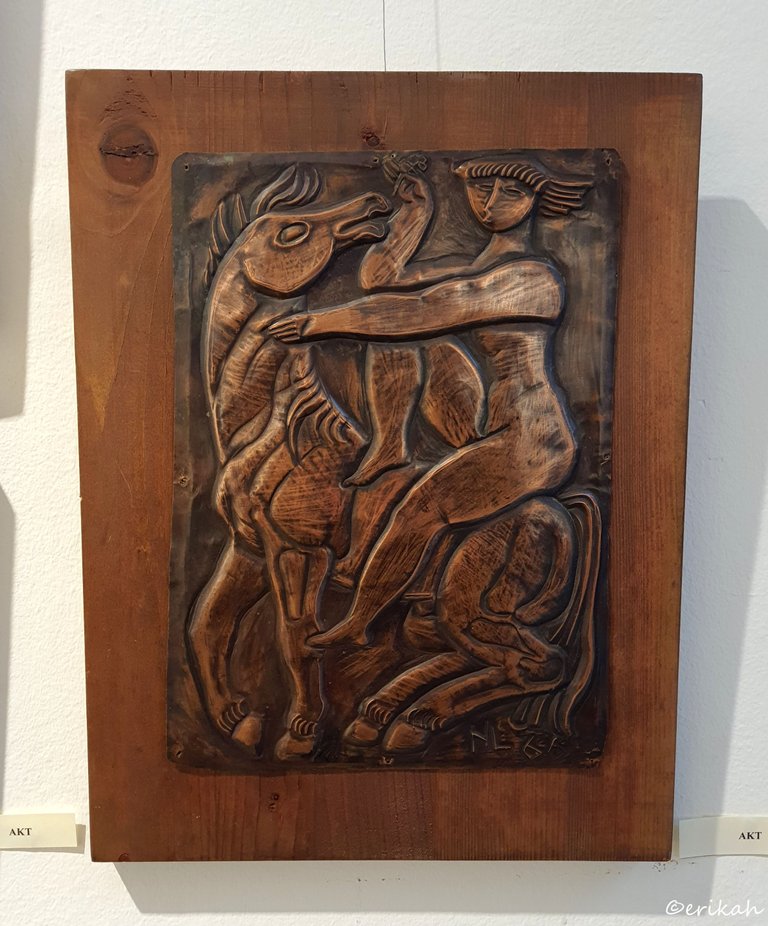
Nude
The first artwork was a copper engraving, an interesting nude. These copper engravings are not rare, but not very common either. It's a special kind of art and copper is also expensive.

Woman With An Owl
Nude
Both are nudes basically, but very different in style. These women are far from the 21st century norm, as far as silhouette is concerned and that makes it special. There's a huge difference in stye, between the two, the second, on the bottom is a bit rough, but that's the beauty of art. You show your way of seeing and illustrating things.
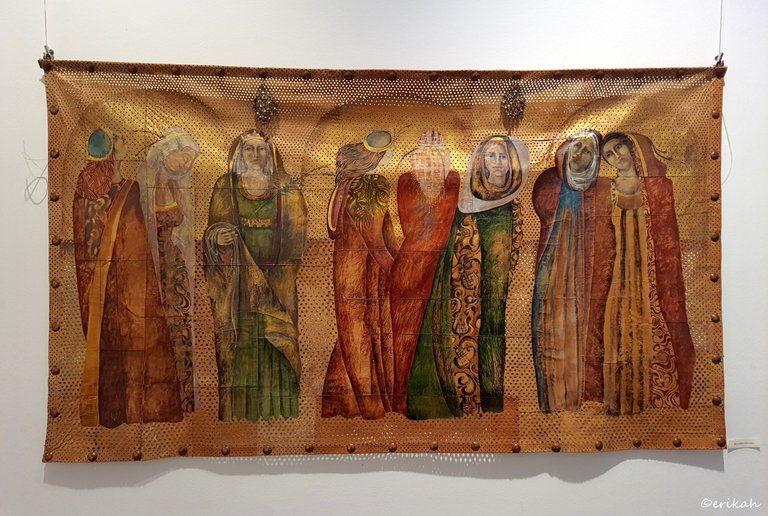
Beatrix's Court
This is where I said this is absolutely mind blowing.
Beatrice of Naples (16 November 1457 – 23 September 1508), also known as Beatrice of Aragon (Hungarian: Aragóniai Beatrix; Italian: Beatrice d'Aragona), was twice Queen of Hungary and of Bohemia by marriage to Matthias Corvinus and Vladislaus II. She was the daughter of Ferdinand I of Naples and Isabella of Clermont. source

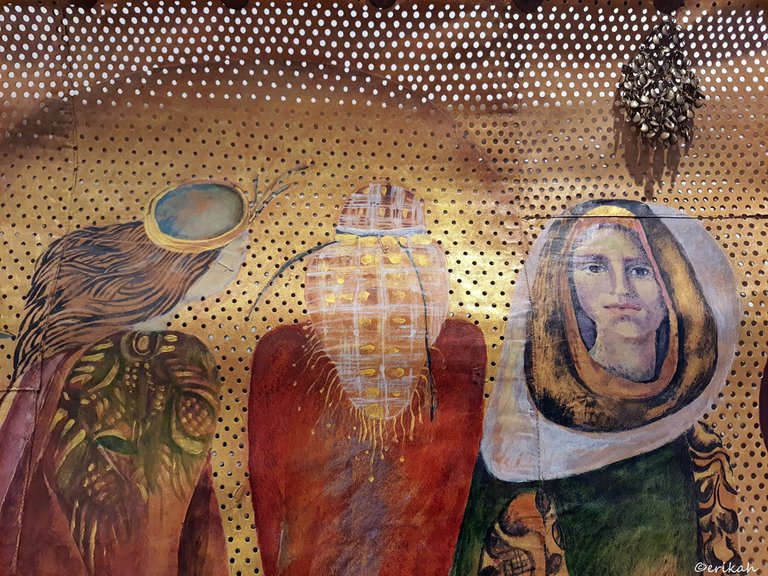
What is so amazing about this artwork is that it is painted on genuine leather. I'm not sure how familiar you are with genuine leather. It's a material that needs preparation. You need to select the finest quality and sew them together to get the size you want. Painting on leather is very different than on any other medium, so you need to familiarize yourself with it and adjust the amount of paint you use.
Now scroll back to the full size painting and have a second look. Look at the dresses, the faces and how the characters are aligned. I'd love to have this on my wall.
What I love about the historical themed exhibitions is the opportunity of learning. If you really want to know what the artist meant, you do your very own research and learn.
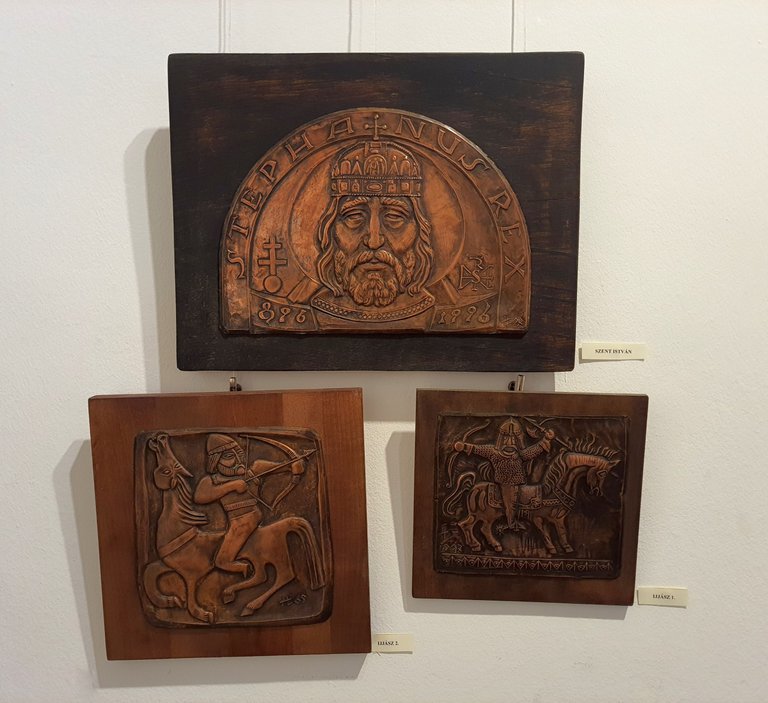
Stephanus Rex
Archer 1
Archer 2
Stephen I, also known as King Saint Stephen (Hungarian: Szent István király; Latin: Sanctus Stephanus; Slovak: Štefan I. or Štefan Veľký; c. 975 – 15 August 1038), was the last Grand Prince of the Hungarians between 997 and 1000 or 1001, and the first King of Hungary from 1000 or 1001, until his death in 1038. His silver dinars bearing the inscriptions STEPHANUS REX ("King Stephen") and REGIA CIVITAS ("royal city") were popular in contemporary Europe, as demonstrated by counterfeited copies unearthed in Sweden. source

King Stephen is an important figure of Hungarian history and this copper engraving is a nice way to keep his memory alive. The two archers are a perfect addition to the board as these archers were the soldiers of those times, so can't be missing. I like the combination of wood and copper engraving.
You can see the crown in real life at the Hungarian Parliament Building, in Budapest.
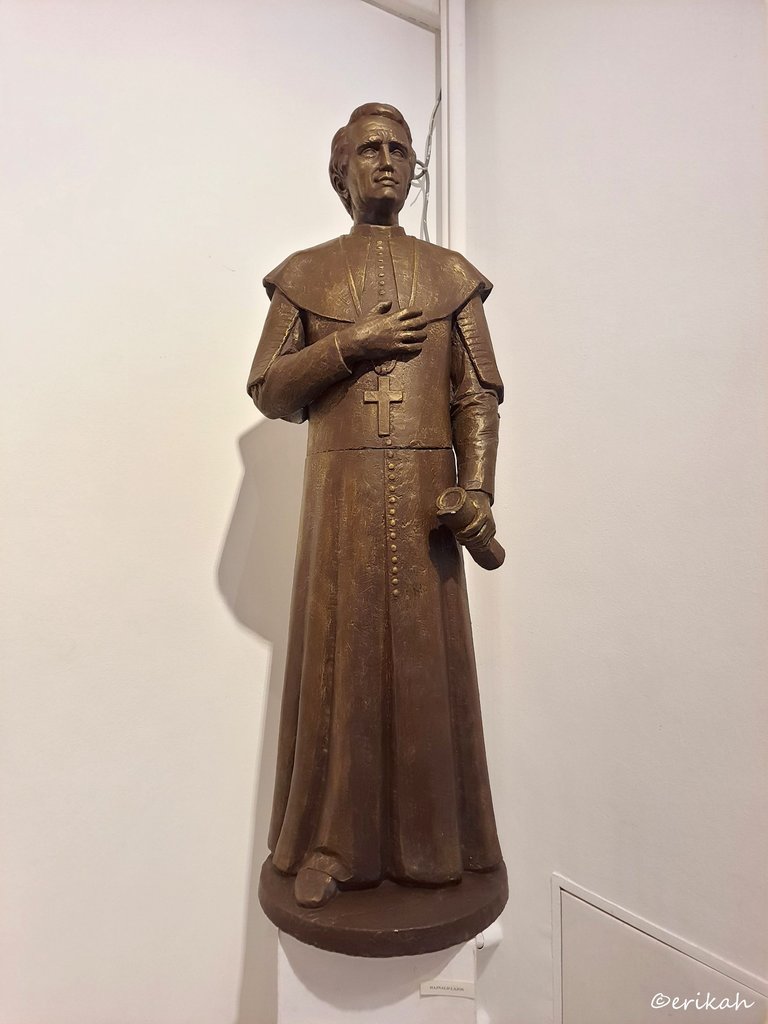
Lajos Hajnald
To be honest, I've never heard of this gentleman, but it turns out it was a Hungarian Archbishop of Kalocsa-Bács, naturalist, and cardinal and lived in the 19th century. The statue itself is a simple one, but its simplicity is what makes it great. Religious personalities are always depicted in the most simple way. The position of the statue is a bit unfortunate and the wire behind the statue could make you think of fatal actions but trust me, this is just a coincidence.
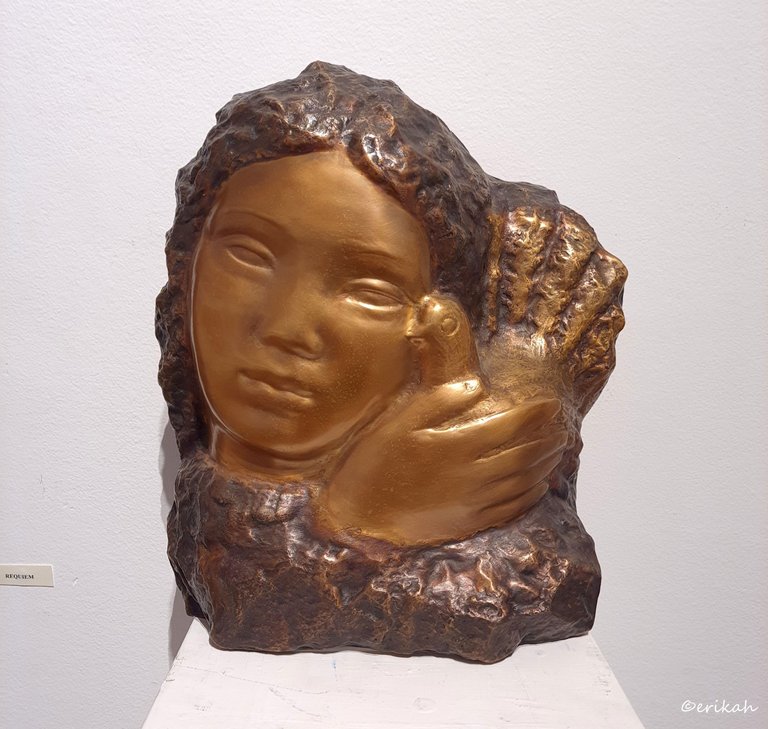
Girl With A Pigeon
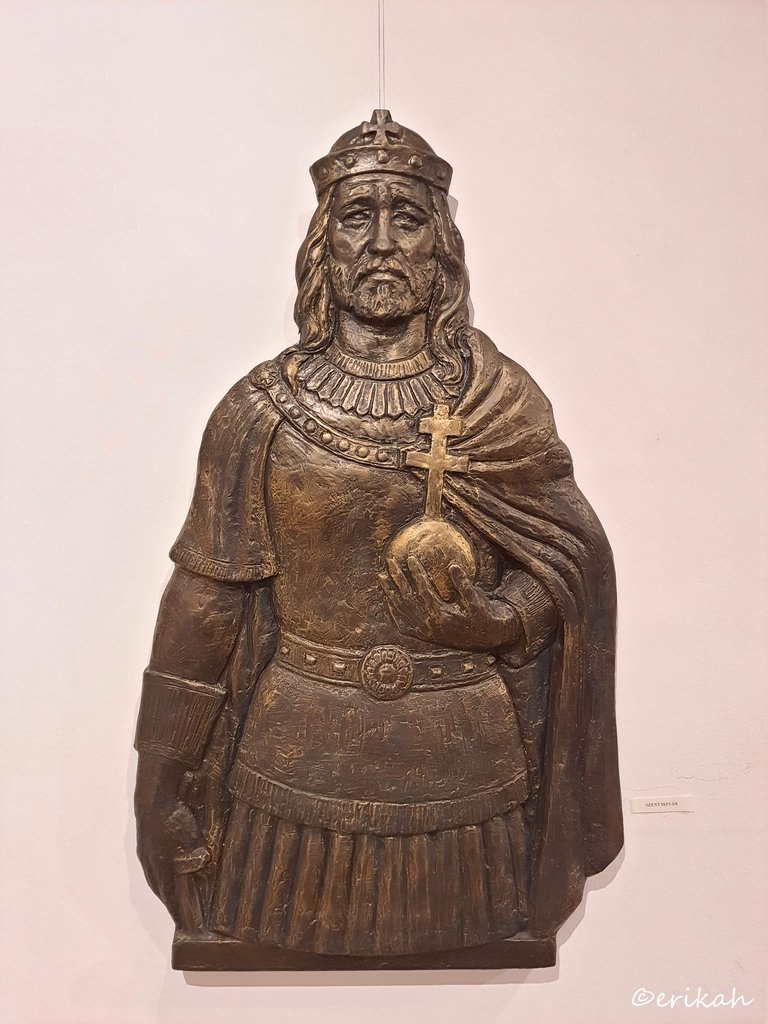
King Stephen
King Stephen again, this time his upper body in bronze, dressed as a warrior, ready to defend his country and people. This is a type of art that I most likely will never have the chance to try out. But I have a huge admiration to those who are mastering it. Maybe it's time to dig into it and see how it's done.
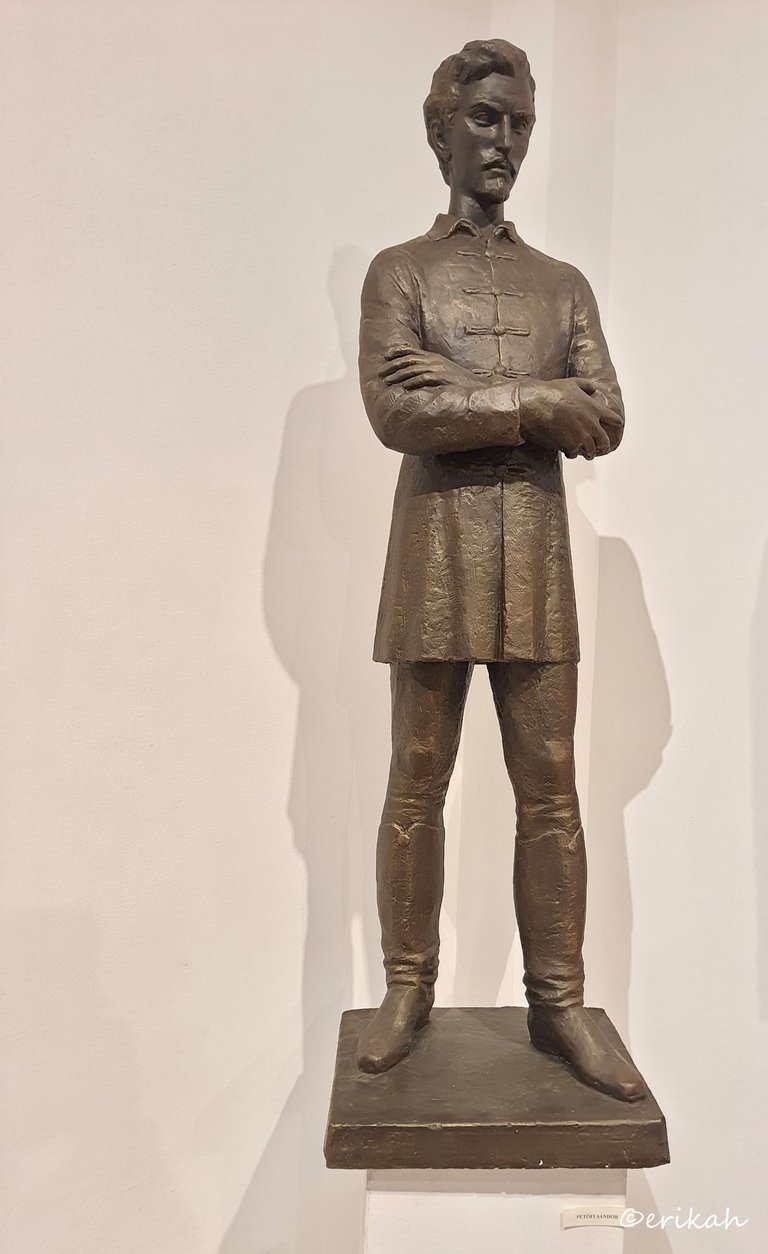
Sándor Petőfi
Sándor Petőfi can't be missing from an exhibition where prominent figures of Hungarian history are present. He was a Hungarian poet and liberal revolutionary, who literally gave his life for freedom. It is believed he died in the Hungarian Revolution of 1848 in the Battle of Segesvár. He died at the age of 26, so not many photographs or drawings were left of him, so this pose and this face expression is the most popular one.
I hope you like bronze statues and copper engraving. I find them really interesting. Next time I'm going to show you something that you may have not seen yet. So stay tuned for the next one.

If you're a newbie, you may want to check out these guides:
- Communities Explained - Newbie Guide
- Cross Posting And Reposting Explained, Using PeakD
- Hive Is Not For Me
- How To Pump Your Reputation Fast - Newbie Guide
- Tips And Tricks & Useful Hive Tools For Newbies
- More Useful Tools On Hive - Newbie Guide
- Community List And Why It Is Important To Post In The Right Community
- Witnesses And Proposals Explained - Newbie Guide
- To Stake, Or Not To Stake - Newbie Guide
- Tags And Tagging - Newbie Guide
- Newbie Expectations And Reality

